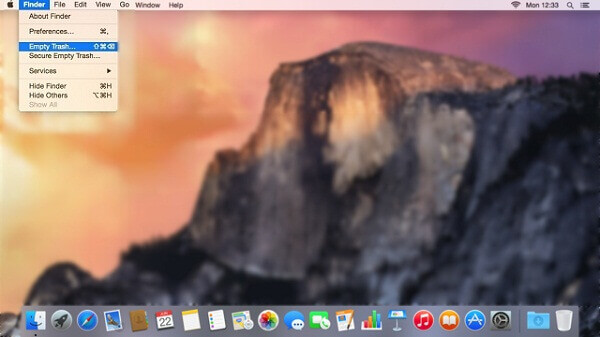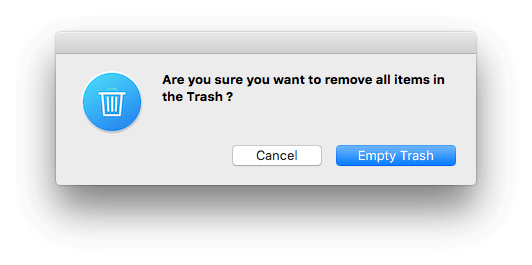

- #MAC FORCE EMPTY TRASH TERMINAL HOW TO#
- #MAC FORCE EMPTY TRASH TERMINAL INSTALL#
- #MAC FORCE EMPTY TRASH TERMINAL PASSWORD#
- #MAC FORCE EMPTY TRASH TERMINAL DOWNLOAD#
#MAC FORCE EMPTY TRASH TERMINAL PASSWORD#
#MAC FORCE EMPTY TRASH TERMINAL DOWNLOAD#
Though, before you download any file shredder app, just make sure it works for your macOS version. There are freely available as well as paid apps to force delete trash and manage your Mac storage. Some of these common apps are Trash it, Stellar Wipe Mac, MacClean, Mac Optimizer, Cocktail, CleanMyMac, and so on.
#MAC FORCE EMPTY TRASH TERMINAL HOW TO#
From these options, let's learn how to force empty trash on Mac using CleanMyMac.

#MAC FORCE EMPTY TRASH TERMINAL INSTALL#
Firstly, install the CleanMyMac app on your system and launch it whenever you wish to force delete trash on Mac.From the provided options on the left panel, visit the "Trash Bins" feature.Click on the "Scan" button to look for all the saved content from the Trash folder.You might have to wait for a while as CleanMyMac would extract the data from the Trash folder.In this end, you can review the extracted content and the size of the Trash folder.Simply click on the "Empty" button and wait as it would force delete trash content. There are times when even after deleting data from the Trash folder, it isn't removed. If you have followed the right approach, then consider restarting your Mac. If the application is running in the background, then a restart would get rid of the temporary files in the process. Therefore, it will also force empty trash on Mac as well. Method 4: Empty the Trash folder in "Safe Mode" Wait for a while as your Mac would be restarted.As a countdown would be started, click on the "Restart" button again to confirm your choice.įrom the provided options on the list, choose to "Restart" your Mac.Simply click on the Apple logo on the screen (on the top left corner). Sometimes, when we restart Mac in the normal mode, the Trash folder stays intact.
To overcome this problem, you can consider restarting your Mac in the Safe Mode instead. Later, you can empty the trash when your Mac is in the Safe Mode. As your Mac would restart, hold the Shift key on the keyboard.Firstly, simply go to the Apple logo and click on the "Restart" button to reboot your Mac.Here's how do you force empty trash on Mac via Safe mode. This will boot the Mac in the Safe Mode instead with minimum features.Keep holding it when the Apple logo would appear on the screen. This Mac 911 article is in response to a question submitted by Macworld reader Vince.In the end, click on the "Restart" button and let your Mac reboot in the normal mode.Now, go to the Trash folder and empty it. Select Delete Immediately and confirm the deletion. Select one or more files in the Trash and Control-click. However, it’s changed further: you can no longer trigger it anywhere in the Finder except in the Trash folder. Within the Trash folder, you can delete items without any further ado. Apple added this option in El Capitan after it ditched Secure Empty Trash There’s a last-resort method you can use: Delete Immediately. However, sometimes a file just doesn’t want to go, and you’ve done everything else. In Terminal, type lsof | grep -i followed by a space and part of the file name, and see if it shows what app or system component still has its hooks in. You can also use the Terminal command lsof, which tracks all files in use by even the lowest of low-level parts of the system.


 0 kommentar(er)
0 kommentar(er)
